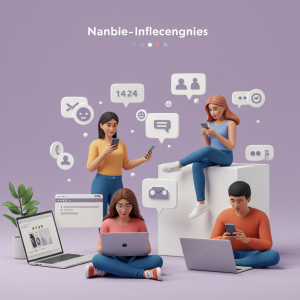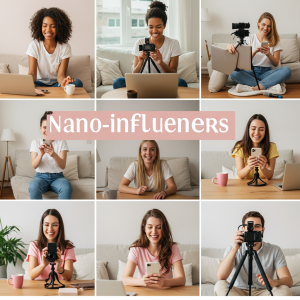What is Sponsored Content? A Beginner’s Guide

You’ve probably seen it without even realizing it. A seemingly normal article in your favorite online magazine, an Instagram post from an influencer you follow, or even a video from a popular YouTuber. They all look and feel like regular content, but they have one key difference: they’re sponsored.
Sponsored content has become a popular and effective marketing strategy for brands of all sizes. It allows businesses to reach engaged audiences through trusted voices and platforms. For consumers, it offers a more subtle and often more valuable form of advertising than traditional, disruptive ads.
Defining Sponsored Content

Sponsored content is a form of advertising where a brand pays a publisher, creator, or platform to create and distribute content that promotes the brand’s product or service. Unlike traditional ads that directly interrupt the user experience (like a pop-up or a commercial break), sponsored content is designed to blend in with the surrounding native content.
The key characteristic is its “native” feel. The goal is for the content to match the style, tone, and format of the platform where it appears. This makes it feel less like a hard sell and more like a natural part of the user’s experience. For example, a sponsored article on a tech blog will read like any other article on that site, but it will be created in partnership with a tech company.
Because it’s a form of advertising, regulations in many countries, including the United States (overseen by the FTC), require that sponsored content be clearly disclosed. You’ll often see labels like “Sponsored,” “Advertisement,” “Paid Partnership,” or the #ad hashtag on social media. Learn more about How to Build Successful Influencer Collaborations That Drive Results.
The Most Common Types of Sponsored Content
Sponsored content can take many forms, adapting to the platform and audience it targets. Here are some of the most common types you’ll encounter.
Articles and Blog Posts
This is one of the original forms of digital sponsored content. A brand collaborates with an online publication or a blogger to produce an article that aligns with the publisher’s editorial style while featuring the brand’s message or product.
- Example: Buzzfeed is famous for its sponsored listicles. A brand like a new streaming service might pay Buzzfeed to create an article titled “10 Obscure Movies You Need to Watch This Weekend.” The article provides genuine recommendations that Buzzfeed’s audience would enjoy, and the streaming service is featured as the place to watch them. It provides value to the reader while subtly promoting the sponsor.
Social Media Posts
With the rise of influencer marketing, sponsored posts on platforms like Instagram, TikTok, and X (formerly Twitter) are everywhere. Brands partner with creators who have a dedicated following to promote their products.
- Example: A fitness influencer on Instagram might post a photo of themselves using a specific brand of protein powder. The caption could describe their post-workout routine and why they love that particular product. It’s marked with a “Paid partnership with…” tag, clearly indicating it’s sponsored. The content is authentic to the influencer’s usual posts, making the recommendation feel genuine to their audience.
Videos
Video is a highly engaging format, making it a prime channel for sponsored content. This can range from a short mention in a YouTube video to a fully dedicated review or tutorial.
- Example: A popular tech YouTuber might release a video reviewing a new laptop. The brand pays the creator for their time and effort in creating the review. A trustworthy creator will still give their honest opinion, but the content itself is sponsored. The sponsorship is usually mentioned at the beginning of the video and included in the description.
Podcasts
Podcast advertising has grown significantly. Sponsorships can range from a brief “brought to you by” mention at the beginning of an episode to a more integrated segment where the host discusses the product or service in detail.
- Example: A true-crime podcast might have a sponsored segment for a home security system. The host might spend a minute talking about the importance of feeling safe and then share their personal experience using the sponsor’s product. This ad read is often woven into the podcast’s narrative, making it feel more relevant than a random commercial.
Why Brands Invest in Sponsored Content

Businesses are shifting more of their marketing budgets toward sponsored content for several compelling reasons.
It Bypasses Ad-Blockers
As ad-blocking technology becomes more widespread, traditional banner and pop-up ads are less effective. Sponsored content, because it’s integrated directly into the publisher’s site or creator’s feed, isn’t typically affected by these blockers. This ensures the brand’s message actually reaches the intended audience.
It Builds Trust and Credibility
Consumers tend to trust recommendations from publishers and creators they follow more than they trust direct advertising from a brand. When a respected source promotes a product, some of that trust is transferred to the brand. This is known as the “halo effect.” The content feels less like an ad and more like a trusted endorsement.
It Offers High Engagement
Because sponsored content is designed to be interesting and valuable, audiences are more likely to engage with it. They might read the full article, watch the entire video, or comment on the social media post. This level of engagement is rarely achieved with traditional display ads, which are often ignored—a phenomenon known as “banner blindness.”
It Reaches Niche Audiences
Brands can be highly strategic with sponsored content, choosing partners whose audience perfectly matches their target demographic. A company selling sustainable fashion can partner with an eco-conscious lifestyle blogger to reach a pre-qualified audience that is already interested in their values and products.
The Future of Brand Partnerships
Sponsored content represents a fundamental shift in how brands communicate with their audiences. It’s a move away from interruption and toward integration. By providing content that entertains, informs, or inspires, brands can build stronger, more authentic relationships with consumers.
As you browse the web, scroll through social media, or listen to your favorite podcast, pay attention to the disclosures. You’ll start to notice just how prevalent sponsored content is. Understanding what it is and why it’s used can make you a more informed consumer and a smarter marketer. The next time you see a piece of content you love, check to see if a brand helped make it happen.





